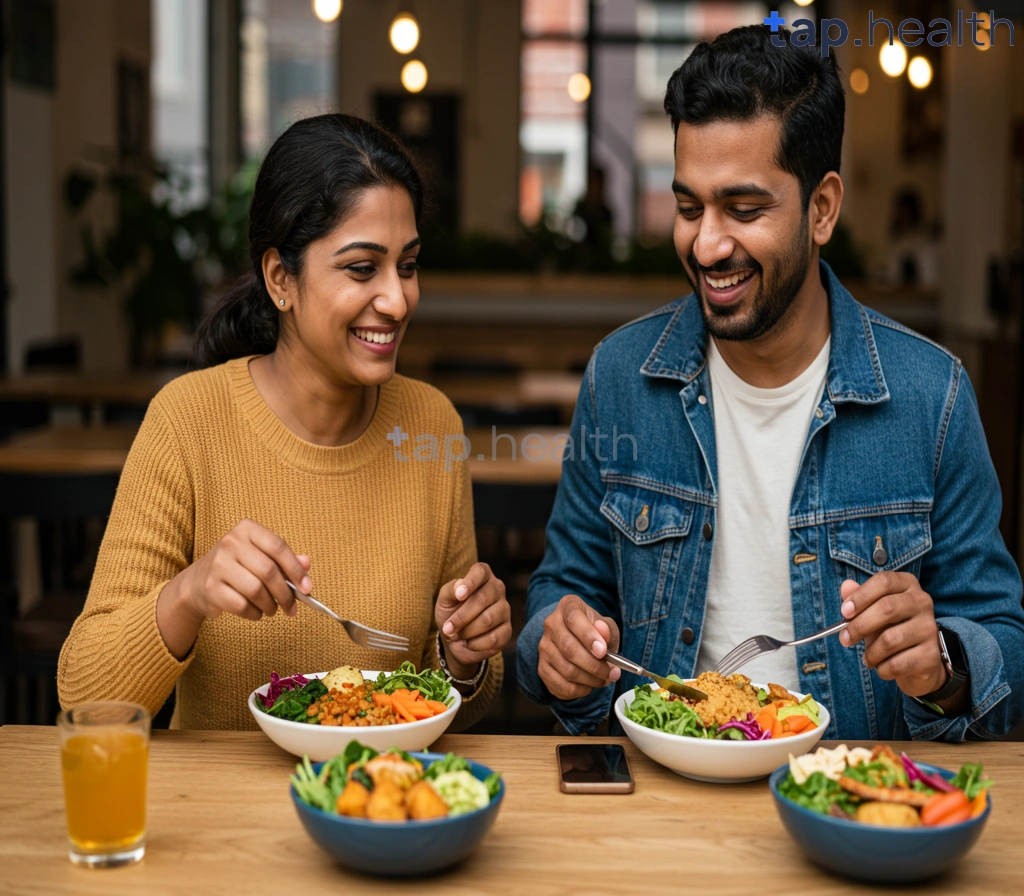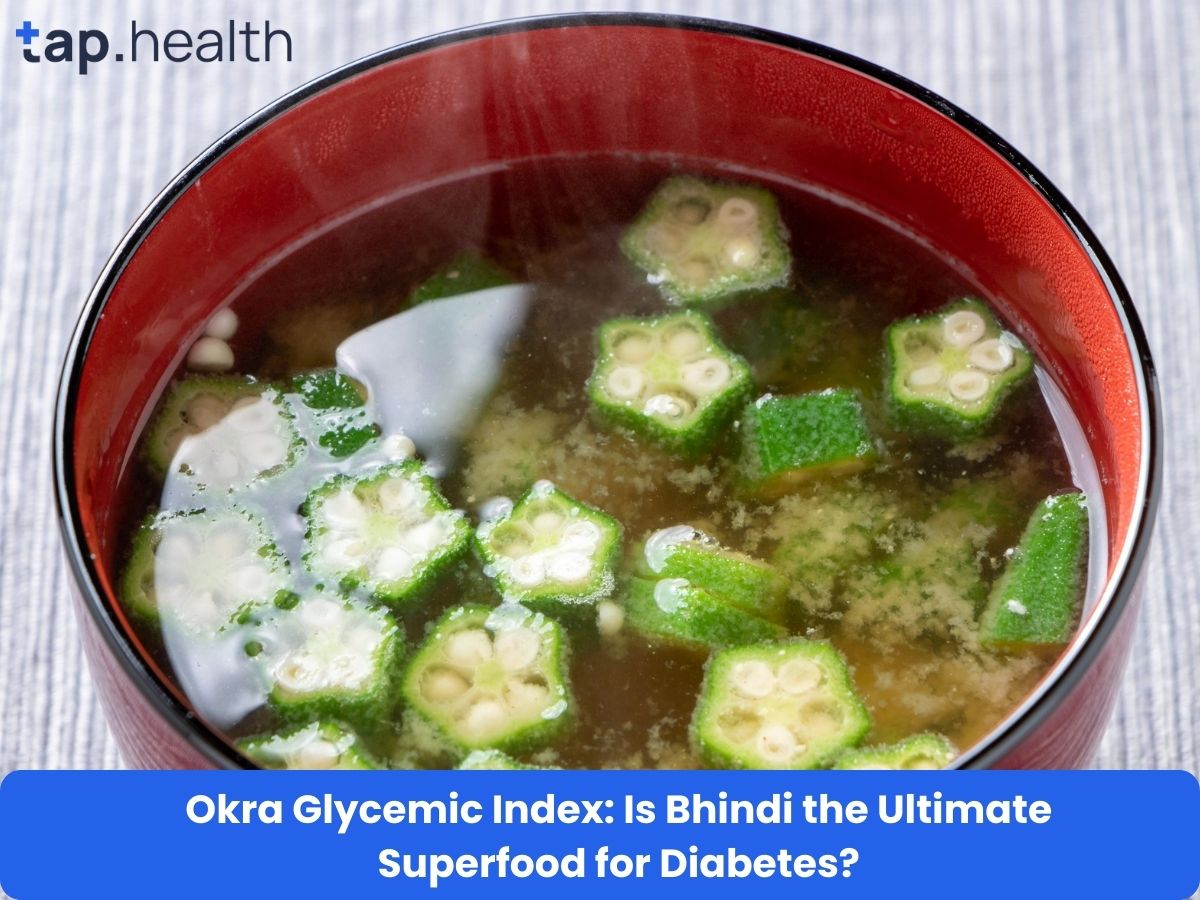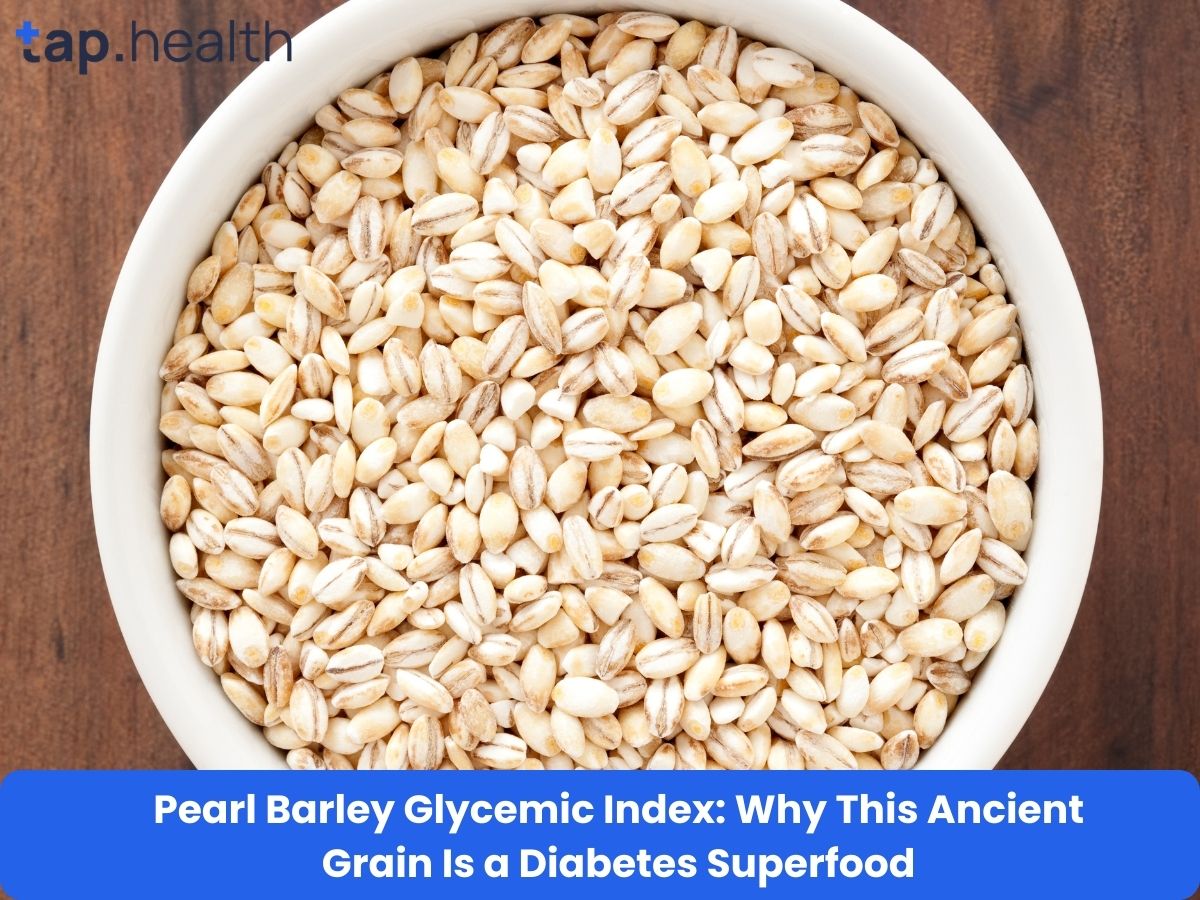Table of Contents
- Vegetarian Diabetes Diet: A High-Protein Guide
- High-Protein Vegetarian Meal Plans for Diabetes Management
- Best Plant-Based Recipes for Diabetics: High Protein Focus
- How to Create a High-Protein Vegetarian Diet for Diabetes
- Top Tips for a Successful High-Protein Vegetarian Diabetes Diet
- Frequently Asked Questions
- References
Managing diabetes can feel like a constant balancing act, but it doesn’t have to be a struggle! If you’re looking for a delicious and effective way to control your blood sugar while enjoying a fulfilling diet, then you’re in the right place. This blog is all about exploring the power of a Vegetarian Diabetes Diet: High-Protein Plant-Based Meal Plans. We’ll delve into creating satisfying, high-protein meals packed with plant-based goodness that will help you thrive. Say goodbye to restrictive diets and hello to vibrant, healthy eating that supports your well-being and helps you manage your diabetes effectively. Let’s get started!
Vegetarian Diabetes Diet: A High-Protein Guide
Managing diabetes in India and other tropical countries often requires careful consideration of dietary choices. A vegetarian, high-protein diet can be incredibly effective in stabilizing blood sugar levels. This approach focuses on incorporating protein-rich plant sources to help regulate insulin response and maintain satiety, reducing the risk of overeating. Remember, individual carbohydrate needs vary, with a general guideline suggesting 45–60 grams per meal for many with diabetes, but consulting a doctor or registered dietitian is crucial for personalized plans. It’s also important to understand that even vegetarians are not immune to developing diabetes; you can learn more about the risks in our article, Can a Vegetarian Get Diabetes?
Prioritizing Protein Sources
Legumes like lentils (masoor dal, chana dal), chickpeas (chholey), and black beans are excellent sources of protein and fiber. Spices commonly used in Indian cuisine, such as turmeric and cinnamon, also offer potential blood sugar-regulating benefits. Incorporating nuts and seeds, such as almonds, cashews, and flaxseeds, adds healthy fats and protein to your meals. These ingredients can be easily integrated into various dishes, from hearty curries to flavorful salads. Soy products like tofu and paneer are also valuable protein sources for vegetarians.
Building Balanced Meals
A well-balanced vegetarian meal for diabetes management should include a lean protein source, complex carbohydrates (like whole grains – brown rice, quinoa, roti made from whole wheat flour), and plenty of non-starchy vegetables. For example, a meal could consist of moong dal cheela (pancakes) with a side of mixed vegetables and a small portion of brown rice. Another option could be a lentil soup with a side salad featuring nuts and seeds. If you’re looking to prevent diabetes, check out our Pre Diabetic Diet Chart for simple plans to help.
Seeking Local Expertise
It’s vital to consult a healthcare professional or registered dietitian familiar with the dietary nuances and local produce available in your specific region. They can help you create a personalized vegetarian diabetes meal plan that aligns with your individual needs, preferences, and local food availability, ensuring effective blood sugar management and overall well-being.
High-Protein Vegetarian Meal Plans for Diabetes Management
Managing diabetes effectively, especially in resource-constrained settings common across many Indian and tropical countries, requires careful attention to diet. Over 75% of people with diabetes live in low- and middle-income countries, highlighting the global importance of accessible and affordable solutions. A high-protein vegetarian diet can be a powerful tool for managing blood sugar levels and overall health in these regions.
Building a High-Protein Vegetarian Diabetes Diet
Focusing on plant-based protein sources is key. Legumes like lentils (masoor dal, moong dal), chickpeas (chana), and kidney beans (rajma) are readily available and affordable staples across India and many tropical nations. These are packed with protein and fiber, which helps regulate blood sugar. Incorporate tofu, paneer (Indian cheese), and various types of nuts and seeds for additional protein and healthy fats.
Sample Meal Ideas
A typical breakfast might include idli (steamed rice cakes) with sambar (lentil-based vegetable stew) and a side of nuts. Lunch could feature rajma chawal (kidney bean curry with rice) or moong dal cheela (savory pancakes made from mung bean batter). Dinner could be a hearty vegetable curry with quinoa or brown rice. Remember to emphasize whole grains over refined carbohydrates. For more specific meal planning, you might find our Diet Chart for Diabetic Patients to Control Diabetes helpful.
Practical Tips for Success
Prioritize whole, unprocessed foods. Minimize added sugars and unhealthy fats. Regular physical activity, even simple walks, complements a healthy diet and improves overall well-being. Consult with a healthcare professional or registered dietitian for personalized dietary advice tailored to your specific needs and preferences. They can help you create a meal plan that is culturally appropriate and sustainable. Remember: consistent, balanced eating is crucial for long-term diabetes management. If weight loss is also a goal, consider exploring our tips on How to Lose Weight with Diabetes Diet Plan.
Best Plant-Based Recipes for Diabetics: High Protein Focus
Managing diabetes requires careful attention to diet, and for women, this is especially crucial, given their 40% higher risk of heart disease compared to men with diabetes. A vegetarian, high-protein diet can be incredibly beneficial, offering delicious and manageable ways to control blood sugar levels. This approach is particularly relevant in Indian and tropical countries, where readily available plant-based protein sources abound.
High-Protein Vegetarian Staples in Indian & Tropical Cuisine
Many traditional Indian and tropical dishes naturally lend themselves to a high-protein, diabetes-friendly diet. Lentils (dal), moong beans, chickpeas, and rajma are excellent sources of protein and fiber, helping to regulate blood sugar and promote satiety. Incorporating these into curries, soups, or as side dishes is a simple way to boost protein intake. Similarly, sprouted moong beans and other legumes provide an easily digestible protein source. Don’t forget the power of nuts and seeds like almonds, cashews, and sunflower seeds, which offer healthy fats and protein in addition to essential vitamins and minerals.
Recipe Ideas for Delicious & Healthy Meals
Consider incorporating these high-protein ingredients into your meals. A hearty moong dal cheela (savory pancake) for breakfast, a chana masala (chickpea curry) with brown rice for lunch, and a lentil soup with a side of mixed greens for dinner can all form the basis of a healthy and satisfying vegetarian diet. Remember to focus on whole grains and limit refined carbohydrates to maintain optimal blood sugar levels. Focus on fresh, seasonal vegetables and fruits, which are abundant in many Indian and tropical regions. For more ideas on foods that can help manage your diabetes, check out 20 Best Foods for People with Diabetes – Tap Health.
Taking Control of Your Health
Embracing a plant-based, high-protein diet tailored to your region’s fresh produce is a powerful step towards managing your diabetes effectively. Explore local markets and experiment with recipes that incorporate these readily available ingredients. Consult with a registered dietitian or healthcare professional for personalized dietary advice. Remember, a balanced and mindful approach to eating is key to a healthier and happier life. You might also be interested in learning more about the potential of a plant-based diet to reverse diabetes by reading Can a Plant-Based Diet Reverse Diabetes?
How to Create a High-Protein Vegetarian Diet for Diabetes
Managing diabetes requires careful attention to diet, and for vegetarians, ensuring sufficient protein intake is crucial. A high-protein vegetarian diet is especially important for maintaining healthy blood sugar levels, especially considering that a significant portion of those living with diabetes are within the 20-64 age group (61%, according to the IDF Diabetes Atlas). This age group often leads busy lives, making convenient, high-protein meal planning essential.
Prioritizing Protein Sources
Incorporating diverse plant-based protein sources is key. Think lentils, chickpeas, kidney beans, and other legumes readily available across India and tropical countries. These are not only protein-rich but also fiber-packed, aiding in blood sugar regulation. Soy products like tofu and tempeh offer another excellent source, while incorporating nuts, seeds, and quinoa adds further variety and nutritional benefits. Remember that protein requirements vary depending on individual factors, so consulting a doctor or registered dietitian is always recommended.
Building Balanced Meals
A well-planned vegetarian diet for diabetes emphasizes whole grains, vegetables, and healthy fats alongside protein. For instance, a simple and delicious meal could be a lentil soup with brown rice and a side of mixed vegetables. For snacks, consider a handful of almonds or a small portion of Greek yogurt (if tolerated). The key is to create balanced meals that provide sustained energy and prevent blood sugar spikes. Spices commonly used in Indian and tropical cuisines, like turmeric and cinnamon, can also contribute to overall health and well-being. The importance of balancing carbohydrates is also crucial, and understanding the difference between Low-Carb vs. Moderate-Carb Diets for Diabetes can help in planning.
Practical Tips for Success
Planning ahead is key to managing a high-protein vegetarian diet effectively. Prepare meals in advance or utilize quick-cooking methods to make healthy eating convenient, even with busy schedules. Staying hydrated is crucial for overall health and blood sugar management. Finally, consistent monitoring and adjustments to your diet based on blood sugar readings are important for personalized management. Consult a healthcare professional for personalized advice tailored to your specific needs and regional dietary preferences. While this focuses on vegetarian options, it’s worth noting that other dietary approaches exist, and you might want to research the pros and cons of alternatives like the Carnivore Diet for Diabetes to see if they align with your health goals.
Top Tips for a Successful High-Protein Vegetarian Diabetes Diet
A high-protein vegetarian diet can play a key role in managing diabetes and improving overall health. Protein helps stabilize blood sugar, supports muscle health, and reduces hunger — all of which are essential for effective diabetes control. For individuals in India and other tropical regions, it’s easy to create a balanced, diabetes-friendly diet using local, nutrient-rich ingredients.
🥦 Prioritize Protein Sources
Protein is the foundation of a diabetes-friendly vegetarian diet. It helps reduce glucose absorption rates and improves satiety, which can prevent overeating and weight gain — both important for blood sugar control.
Incorporate locally available, high-protein options such as:
-
Lentils (masoor dal, chana dal)
-
Chickpeas (chhole)
-
Kidney beans (rajma)
-
Soy products like tofu, tempeh, and paneer
These foods are not only protein-rich but also high in fiber, promoting better digestion and improved blood sugar stability.
🌾 Be Mindful of Carbohydrate Intake
Carbohydrates are necessary for energy, but the type and quantity you consume matter greatly. Replace refined grains with complex carbohydrates that have a lower glycemic index (GI).
Opt for:
-
Whole grains like brown rice, millets (ragi, bajra), and oats
-
Legume-based dishes that combine protein and complex carbs
-
Smaller, balanced portions to prevent glucose spikes
These foods release sugar slowly into the bloodstream, ensuring more stable energy and improved glycemic control throughout the day.
🥕 Embrace Regional Fruits and Vegetables
India and tropical countries offer a rich variety of low-GI fruits and vegetables ideal for diabetics. Add diversity to your meals with:
-
Bitter gourd (karela) and drumstick (moringa) — known for their blood sugar-lowering properties
-
Leafy greens like spinach, fenugreek leaves, and amaranth
-
Colorful vegetables for essential vitamins, minerals, and antioxidants
Even though these foods are healthy, portion control remains vital — too much of even low-GI foods can impact glucose levels.
🩺 Consult a Healthcare Professional
Before making significant dietary changes, always consult a doctor or registered dietitian. They can help create a personalized meal plan tailored to your blood sugar levels, weight goals, and lifestyle.
This is especially important because diabetics who smoke face double the risk of cardiovascular complications. Expert guidance ensures that your high-protein vegetarian diet supports both heart and metabolic health safely.
Frequently Asked Questions on Vegetarian Diabetes Diet: High-Protein Plant-Based Meal Plans
Q1. What is a high-protein vegetarian diet for diabetes, and how does it help?
It’s a meal plan focusing on plant-based protein sources (legumes, soy, nuts, seeds) to better manage blood sugar and keep you feeling full. This helps regulate insulin response, a key factor in diabetes management.
Q2. What kinds of meals are included in this diet?
Think lentil dishes, vegetable curries with brown rice or quinoa, and salads with nuts and seeds. The focus is on lean protein, complex carbohydrates (whole grains), and non-starchy vegetables.
Q3. Is this diet suitable for everyone with diabetes, and are there any limitations?
While beneficial for many, individual carbohydrate needs vary. It’s crucial to consult a doctor or registered dietitian to create a personalized plan that suits your specific needs and considers your location and preferences. They can help determine the right balance for you.
Q4. How do I get started with a high-protein vegetarian diet for diabetes?
Begin by consulting a healthcare professional or registered dietitian. They will help you create a personalized plan based on your individual needs and preferences. They can also offer guidance on incorporating this diet into your lifestyle.
Q5. Besides diet, what else is important for managing diabetes?
Regular physical activity is essential for long-term diabetes management and overall well-being. Combine a balanced diet with exercise for optimal results.
References
- A Practical Guide to Integrated Type 2 Diabetes Care: https://www.hse.ie/eng/services/list/2/primarycare/east-coast-diabetes-service/management-of-type-2-diabetes/diabetes-and-pregnancy/icgp-guide-to-integrated-type-2.pdf
- What is Diabetes: https://www.medschool.lsuhsc.edu/genetics/docs/DIABETES.pdf



